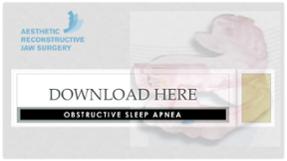Share this
Jaw surgery and oral appliance therapy for Obstructive Sleep Apnea.
on July 22, 2016
 I spent my last weekend attending a Sleep Medicine meeting organized by the National University of Singapore. This meeting was to raise funds for the Edmund Tay Mai Hiong Endowment Fund, which seeks to educate dentists on Sleep Medicine and the role they play in management of sleep-related breathing disorders (SBD). This is a very good initiative as dentistry offers solutions to such conditions that are as effective as any branch of medicine. What are the dental treatments that can help patients with sleep-related breathing disorders?
I spent my last weekend attending a Sleep Medicine meeting organized by the National University of Singapore. This meeting was to raise funds for the Edmund Tay Mai Hiong Endowment Fund, which seeks to educate dentists on Sleep Medicine and the role they play in management of sleep-related breathing disorders (SBD). This is a very good initiative as dentistry offers solutions to such conditions that are as effective as any branch of medicine. What are the dental treatments that can help patients with sleep-related breathing disorders?
First, we need to recognize what kind of problems can be managed by dental solutions. They are mainly obstructive sleep apnea (OSA) and upper airway resistance syndrome (UARS). These two are similar but different conditions but that is another topic for another day. Let’s take a look at OSA.
Some people have very narrow airway which collapse when they sleep, causing obstruction to breathing. This can happen many times in an hour and depending on the frequency of this occurrence, the severity of the obstruction is graded. There are many contributing factors to OSA. Some local factors such as having a small retruded jaws, while others may be more systemic e.g. obesity. When we sleep our muscle tone relaxes thereby allowing the oral tissues to fall back and obstruct the airway.
CPAP
Traditionally, in Singapore, OSA is managed surgically by ENT surgeons and non-surgically by specialists in respiratory medicine or neurology. In general, patients usually prefer a non-surgical treatment and understandably so. However, non-surgical treatment for OSA usually means using a continuous positive airway pressure (CPAP) machine to pump air into the lungs. This is a rather inconvenient and uncomfortable way of sleeping as it involves wearing a mask over the nose and/or mouth which is connected to a machine that pumps air in. This machine is quite sophisticated as it is able to titrate the pressure needed to pump air in based on the resistance offered by the obstructed airway. Physicians consider this the gold standard for treatment of obstructive sleep apnea as it guarantees that the lungs are ventilated throughout sleep. However, patient compliance with CPAP is low. So, even though it can treat OSA, it is only effective if the patient uses it.
ORAL APPLIANCE THERAPY
Recently, the American Academy of Sleep Medicine accepted that oral appliance therapy is an effective treatment for mild to moderate OSA. These are basically mouth guards that are fitted over the teeth such that the lower jaw is pushed forward. This in turn opens up the airway at the level of the tongue as well as tightens up the muscles around back of the mouth. This prevents or minimizes the risk of the tongue falling back or the soft tissues around the throat from obstructing the airway. There are many different designs of oral appliances to suit different patients. Patients’ compliance is much higher as it is less intrusive and can be easily brought along when travelling. These appliances must be titrated to suit each individual patient and monitored periodically for efficacy as well as potential disturbances to the teeth and jaw joints.
ENT SURGERY
Surgically, ENT surgeons dominate the scene in Singapore. They often use the analogy of the tissue box and the tissues inside. Their approach towards treatment is to reduce the amount of tissue so that air can enter the tissue box. Common procedures used are Uvulopalatopharyngoplasty (UPPP), which basically cuts away the excessive tissue at the junction of the mouth and throat. Reduction of the turbinates inside the nose by radiofrequency is another commonly used procedure. For lower level obstructions, suspension of the tongue and tying it to the lower jaw to prevent it from falling back is also one of the treatment modality ENT surgeons like to use. However, studies have shown that such “tissue reduction” surgeries tend not to have sustained results over the long haul. Most of these patients suffer from relapse after a few years as the tissues regain bulk.
MAXILLO-MANDIBULAR ADVANCEMENT
 Oral and Maxillofacial Surgeons treat OSA by doing maxillomandibular advancement (MMA). This is not unlike the orthognathic surgery that is done for correction and deformity and malocclusion. The upper and lower jaws are cut and detached from the base, and repositioned into a more forward position than before. This forward movement opens up the airway thereby eliminating OSA. Using the ENT analogy of tissues in a tissue box, this is analogous to expanding the tissue box to accommodate the tissues.
Oral and Maxillofacial Surgeons treat OSA by doing maxillomandibular advancement (MMA). This is not unlike the orthognathic surgery that is done for correction and deformity and malocclusion. The upper and lower jaws are cut and detached from the base, and repositioned into a more forward position than before. This forward movement opens up the airway thereby eliminating OSA. Using the ENT analogy of tissues in a tissue box, this is analogous to expanding the tissue box to accommodate the tissues.
CHOOSING THE RIGHT TREATMENT
There are many treatment modalities for OSA. It should not a question of which is better than the other. Different patients have different areas of obstruction and to different degrees. Many have weight problems and the first line treatment may be a weight loss and maintenance program supplemented by CPAP till they attained the desired weight. Others may have a mild problem with nasal obstruction and radiofrequency coagulation of the nasal turbinates may be all that is needed. There are some with severely restricted jaw bones that are compromising the airway that requires maxillomandibular advancement. A common mistake made by many patients and doctors is adopting a treatment modality that may be acceptable by the patient but totally ineffective in the long run. It is not uncommon to see patients with extremely retruded lower jaw being treated only with tongue suspension when jaw advancement is needed. The oft cited reason by both doctor and patient is that jaw advancement is too invasive. This reminds me of the story of the man who looks for his lost keys under the lampost despite having dropped his keys in another corner. When asked why he was searching under the lampost instead of where the keys were dropped, his reply was that he could not see in the dark corner.
OSA is a multidisciplinary problem requiring specialists of different training. Each specialist must be able to recognize the abilities of other specialties in managing the patient and organize a team when needed to offer the best solution to the patient.
Share this
- Jaw Surgery (93)
- Dental Implants Singapore (90)
- Orthognathic Surgery (48)
- Replacing Missing Teeth (26)
- Missing Teeth Options (23)
- Underbite (23)
- Bone Grafting (21)
- Costs (18)
- Facial Aesthetics (18)
- Aesthetics (17)
- dental implants (16)
- corrective jaw surgery (15)
- BOTOX (11)
- Dermal Fillers (11)
- Wisdom teeth (10)
- Fixed Implant Dentures (8)
- Loose Dentures Singapore (6)
- Medisave (6)
- sleep apnea (6)
- Braces (5)
- Dental Pain (5)
- Dentures in Singapore (5)
- Loose Teeth (5)
- Tooth Extraction (5)
- jaw deformities (5)
- bimax (4)
- bone graft (4)
- maxillomandibular advancement (4)
- all-on-4 (3)
- bimaxillary protrusion (3)
- chin implant (3)
- facial asymmetry (3)
- full mouth dental implants (3)
- genioplasty (3)
- immediate implant (3)
- removal of an integrated dental implant (3)
- third molars (3)
- wisdom tooth surgery (3)
- My Dentures Don't Fit (2)
- VME (2)
- bone graft healing (2)
- distraction osteogenesis (2)
- medical tourism (2)
- obstructive sleep apnea (2)
- orthodontics (2)
- plastic surgery (2)
- CT guided dental implants (1)
- Double jaw surgery (1)
- Invisalign (1)
- Periodontal Disease (1)
- Permanent Dentures Singapore (1)
- before and after photos (1)
- facial trauma (1)
- fractured dental implant (1)
- oral appliance therapy (1)
- root canal treatment (1)
- veneers (1)
- vertical maxillary excess (1)
- September 2019 (2)
- July 2019 (2)
- May 2019 (2)
- August 2018 (1)
- October 2017 (1)
- September 2017 (2)
- August 2017 (1)
- June 2017 (2)
- May 2017 (4)
- April 2017 (1)
- March 2017 (1)
- February 2017 (3)
- January 2017 (3)
- December 2016 (1)
- November 2016 (2)
- October 2016 (4)
- September 2016 (9)
- August 2016 (5)
- July 2016 (11)
- June 2016 (14)
- May 2016 (6)
- April 2016 (2)
- March 2016 (1)
- January 2016 (7)
- December 2015 (10)
- November 2015 (4)
- October 2015 (9)
- September 2015 (7)
- August 2015 (1)
- July 2015 (6)
- June 2015 (3)
- May 2015 (7)
- April 2015 (5)
- March 2015 (8)
- January 2015 (5)
- December 2014 (7)
- November 2014 (7)
- October 2014 (6)
- September 2014 (8)
- August 2014 (5)
- July 2014 (7)
- June 2014 (8)
- May 2014 (9)
- April 2014 (10)
- March 2014 (6)
- February 2014 (8)
- January 2014 (3)
Subscribe by email
Email subscription




No Comments Yet
Let us know what you think